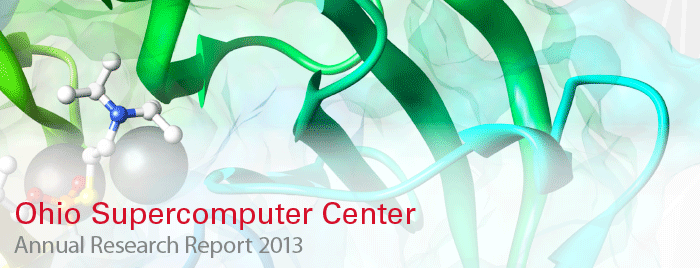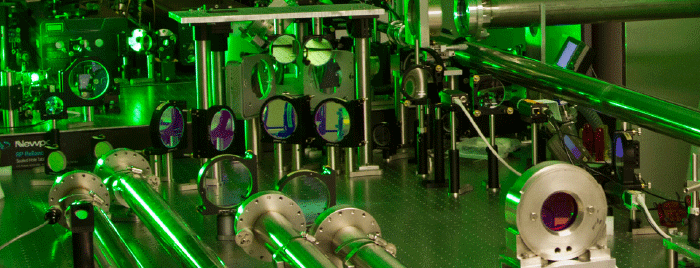A research group led by Douglass Schumacher at The Ohio State University are conducting simulations of experiments being conducted on powerful lasers, such as Ohio State’s 400 Terawatt Scarlet laser, shown here.
A new generation of powerful lasers has recently become operational, like the 400 Terawatt Scarlet laser at The Ohio State University (a Terawatt is equal to one trillion watts). These lasers can drive matter to extreme temperatures and densities, applying pressures well over a billion atmospheres.
There is a worldwide effort to use intense lasers to recreate conditions at the core of gas giant planets or stellar atmospheres in the laboratory where they can be studied. Moreover, intense lasers also can generate beams of electrons, ions, neutrons, x-rays, gamma rays and even positrons that might have properties useful for applications, ranging from medical treatments to testing airplane parts for corrosion.
However, the extreme laser-matter interactions possible with such intense light are beyond any known analytic theory, and numerical simulations are crucial for designing experiments and understanding the resulting data. Douglass Schumacher, Ph.D., associate professor of physics at Ohio State, leads a modeling group that performs simulations of experiments using Scarlet and other powerful lasers around the country.
“The experimental diagnostics in use can provide only an indirect measure of the incredible interactions taking place,” said Schumacher. “Our simulations allow us to determine what is going on inside the target, where the temperature can easily exceed one million degrees.”
Schumacher’s modeling team uses the computational resources of the Ohio Supercomputer Center to perform “particle-in-cell” simulations that break the target into hundreds or thousands of tiny pieces, each modeled using a single processor. The processors communicate with each other, sharing information about particle motion and electric and magnetic fields. This way, the laser interaction and subsequent evolution (and destruction) of the target can be followed with high temporal and spatial resolution.
“We have been able to explain discrepancies between experimental results and other models by running simulations large enough to account for the many ways the laser energy can spread throughout the target,” Schumacher said.
His group is studying a number of different problems, including how to create regions of high density and temperature in solid targets using Scarlet. Little is known about matter under these conditions, but it is believed to be important for planetary evolution. His team also is exploring how to turn Scarlet into a proton or x-ray source with properties that are ideal for a range of uses, such as treating cancer.
Project Lead: Douglass Schumacher, The Ohio State University
Research Title: Modeling intense laser plasma interactions driven by next generation short pulse lasers
Funding Source: Air Force Office of Scientific Research, Department of Energy
Website: http://hedp.osu.edu

